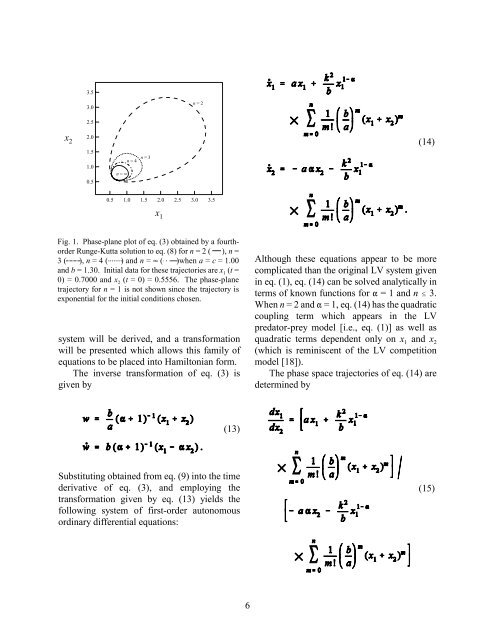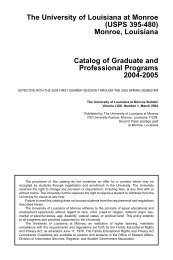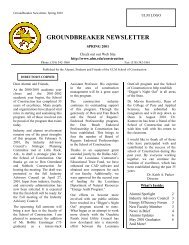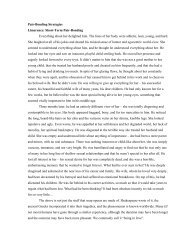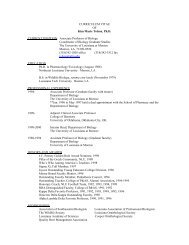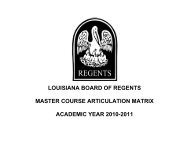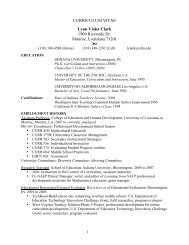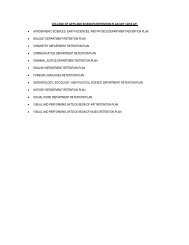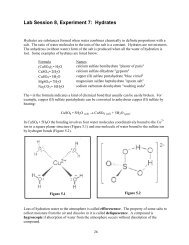Analytic Solutions to a Family of Lotka-Volterra Related Differential ...
Analytic Solutions to a Family of Lotka-Volterra Related Differential ...
Analytic Solutions to a Family of Lotka-Volterra Related Differential ...
Create successful ePaper yourself
Turn your PDF publications into a flip-book with our unique Google optimized e-Paper software.
3.5<br />
3.0<br />
2.5<br />
x 2.0 2<br />
1.5<br />
n = 3<br />
n = 4<br />
1.0<br />
n = ∞<br />
0.5<br />
0.5 1.0 1.5 2.0 2.5 3.0 3.5<br />
x 1<br />
n = 2<br />
(14)<br />
Fig. 1. Phase-plane plot <strong>of</strong> eq. (3) obtained by a fourthorder<br />
Runge-Kutta solution <strong>to</strong> eq. (8) for n = 2 ( ), n =<br />
3 ( ), n = 4 ( ) and n = 4 ( )when a = c = 1.00<br />
and b = 1.30. Initial data for these trajec<strong>to</strong>ries are x 1 (t =<br />
0) = 0.7000 and x 2 (t = 0) = 0.5556. The phase-plane<br />
trajec<strong>to</strong>ry for n = 1 is not shown since the trajec<strong>to</strong>ry is<br />
exponential for the initial conditions chosen.<br />
system will be derived, and a transformation<br />
will be presented which allows this family <strong>of</strong><br />
equations <strong>to</strong> be placed in<strong>to</strong> Hamil<strong>to</strong>nian form.<br />
The inverse transformation <strong>of</strong> eq. (3) is<br />
given by<br />
Although these equations appear <strong>to</strong> be more<br />
complicated than the original LV system given<br />
in eq. (1), eq. (14) can be solved analytically in<br />
terms <strong>of</strong> known functions for " = 1 and n # 3.<br />
When n = 2 and " = 1, eq. (14) has the quadratic<br />
coupling term which appears in the LV<br />
preda<strong>to</strong>r-prey model [i.e., eq. (1)] as well as<br />
quadratic terms dependent only on x 1 and x 2<br />
(which is reminiscent <strong>of</strong> the LV competition<br />
model [18]).<br />
The phase space trajec<strong>to</strong>ries <strong>of</strong> eq. (14) are<br />
determined by<br />
(13)<br />
Substituting obtained from eq. (9) in<strong>to</strong> the time<br />
derivative <strong>of</strong> eq. (3), and employing the<br />
transformation given by eq. (13) yields the<br />
following system <strong>of</strong> first-order au<strong>to</strong>nomous<br />
ordinary differential equations:<br />
(15)<br />
6


